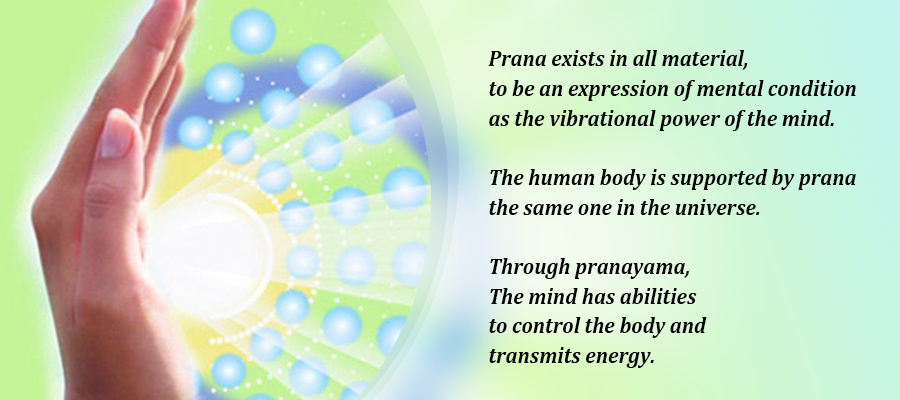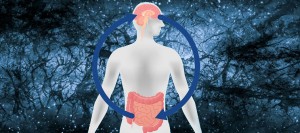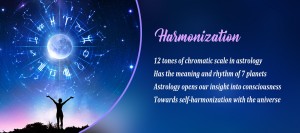For example, vishuddhi chakra is one of the main distribution stations. It is situated at the junction in the neck, and the pranas are distributed from vishuddhi to different parts of that area- ears, eyes, nose, throat, thyroid, parathyroid, thymus, etc. If there is improper distribution of prana to the thyroid, emotional diseases occur. So many emotional complexes which we are suffering from are directly caused by hypothyroid or hyperthyroid, and this condition results from improper distribution of prana from vishuddhi chakra. So an emotional problem arising from improper distribution of prana in the thyroid complex should be termed as somato-psychic, not psycho-somatic.
For a second example, let us consider manipura chakra, behind the navel. This is the main distributing centre for the digestive system and the adrenal glands. As you know, the adrenals produce the hormone adrenaline. If there is an improper distribution of prana from manipura chakra to the adrenal glands, you will suffer from fear-psychosis, colitis, and other somatic diseases.
The third example is a very important one. Swadhisthana chakra, located at the coccyx, is the distributing station for all the uro-genital organs except the testicles. These include the uterus, ovaries, kidney and bladder, and urinary organ. Now if improper distribution of prana takes place, or excess energy is used by these particular organs of the body, then you will have the problems of this centre. Sometimes, people who are suffering from frigidity or impotence go to the doctor, who immediately tells them, ‘You have a psychological problem. Something from your childhood is affecting you.’ I don’t entirely disagree with this theory. Our childhood experiences do have an influence on our present behaviour patterns, but you must remember that any type of frigidity or impotence is not psycho-somatic, it is somato-psychic.
Transmission of Prana Energy
The science of prana vidya is designed to facilitate the proper distribution of prana throughout the whole body. If there is an excess of prana anywhere, with this science you can balance it. If there is a disease caused by a lack of prana shakti, then an excess of prana from another area is supplied to the affected part of the body. This is done by converting prana into magnetic energy and then into a flow of psychic energy. When prana has been converted into magnetic energy it can also be transmitted outside of the body through your fingers, a look, or a thought. It can be transported by a flower. It can also be used to charge an object like a mala, just as you charge your car battery with electric wires.
Transmission of prana is a natural occurrence which takes place all the time, consciously as well as unconsciously. Scientists have seen that the energy of the human body flows outward and inward. Vibrations or energy charges are constantly being emitted from every physical body. Some people have long strong pranic radiations, while others have short feeble radiations. Research with Kirlian photography has verified this hypothesis of pranic energy.
Prana is very subtle and can only be felt by the psychic body. Sensitive people can feel it, and those who are healers by nature are born with this faculty, with their pranamaya kosha manifesting predominantly. Though they have not learned this science from any guru or books, these people are capable of healing the sick. Often they themselves are surprised at their own powers and wonder where they came from and how they work.
Of course, most people are not born healers, but many are capable of developing this potential to some degree through the practice of prana vidya. This technique not only opens up your awareness to the vast stores of energy within the human body, but it also teaches you how to consciously manipulate them for the improvement of your own health and that of others.
Raising and distributing the prana
In the practice of prana vidya, the channel used for raising the prana is pingala nadi, which in modern science can be correlated with the sympathetic nervous system. Pingala emanates from mooladhara chakra at the base of the spine. It curves right and left, crossing over at all the major chakra points. Finally it terminates at ajna, where the energy is collected and stored for distribution. In order to practise prana vidya one must have a good understanding of pingala nadi.
Before beginning the practice, if there is an energy block anywhere in the body, this must be cleared first by practising yogasanas. The shakti bandha series is particularly important for clearing the energy blocks in the body.
Next you must perfect ujjayi pranayama and become familiar with all the chakra points. Most of the chakras are fairly easy to locate because they are associated with points which we can directly feel: mooladhara- perineum, swadhisthana- coccyx, manipura- behind the navel, anahata- behind the sternum, vishuddhi- behind the throat pit. Ajna is the most difficult to locate. It is situated at the pineal gland, right at the top of the spinal cord in the medulla oblongata. If you look at a book on anatomy, you will see where it is, but if you try to locate it mentally, you won’t be able to find it. So we have a very simple practice for this.
Close your eyes and concentrate on the eyebrow centre. If you are able to visualise a dot, bindu, or star at this point, then you can skip over the next stage of this practice. If you are not able to visualise anything there, apply a dab of balm at the eyebrow centre. In a few seconds you will feel some sensations there which will help you to locate the bindu or star.
When you are able to visualise the bindu, practise moving it backward to ajna and forward to the eyebrow centre, with the help of ujjayi pranayama. Feel that you are breathing back and forth.
When this practice has been established and you are able to locate all the chakras, you must develop a clear mental image of pingala nadi. Remember that pingala does not go straight up to ajna. It moves in absolutely symmetrical curves. Starting from mooladhara, pingala curves to the right and crosses back over at swadhisthana. Then it curves to the left and crosses at manipura, to the right and crosses at anahata, to the left and crosses at vishuddhi. Finally it curves to the right and terminates at ajna. The path is easier to remember if you keep in mind that the first and last curves are always to the right.
Once you have a clear image of pingala passage, you are ready to begin raising the prana. Inhale in ujjayi and move up through the curves and chakras from mooladhara to ajna. Exhale in ujjayi and move back down the same route to mooladhara. Inhale while ascending and exhale while descending. The colour of pingala nadi is red. So as you inhale and exhale, imagine that you are traveling along a red path. At the end of each inhalation, practise kumbhaka (breath retention) at ajna chakra. After forty rounds, distribute the energy to the affected part.
The distribution of prana shakti to the affected part is a very complicated process, because you have to know how the particular part is connected with ajna chakra. Supposing you have pain in the knee; you have to supply prana to that part from ajna chakra. This supply of prana to that affected part has to be done with a very subtle type of ujjayi. Each inspiration has to be so subtle that it can last for about a minute. But you have to know the exact physiological and yogic pathways from ajna chakra to the affected part in the knee.
There are so many pathways. You have to find the correct one and when you have discovered it, circulate your prana from ajna chakra to the affected part. Direct the charged prana until you feel strong sensations of heat and melting, and a type of magnetic presence in that particular part of the body. First you have to try for yourself, then you can try for others as well.





